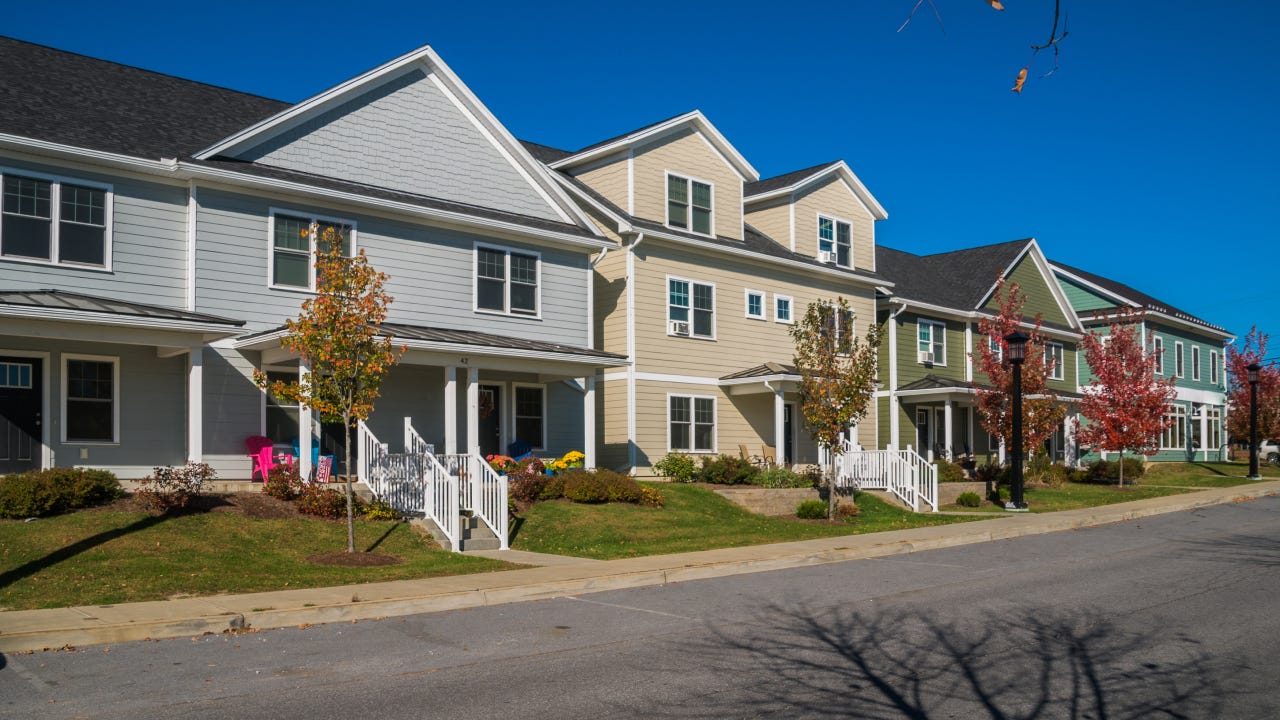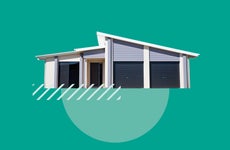HomeReady mortgage guide

The Bankrate promise
At Bankrate we strive to help you make smarter financial decisions. While we adhere to strict , this post may contain references to products from our partners. Here's an explanation for .
Our writers and editors used an in-house natural language generation platform to assist with portions of this article, allowing them to focus on adding information that is uniquely helpful. The article was reviewed, fact-checked and edited by our editorial staff prior to publication.
Key takeaways
- A HomeReady mortgage is a type of conventional loan with a down payment requirement of just 3 percent. You can use it to buy a home or refinance an existing mortgage.
- To qualify, your income can’t exceed more than 80 percent of the median income in your area.
- You can meet the 3 percent down payment requirement using gifts from relatives or friends, grants and other sources. You can also count rental income on your loan application.
What is a HomeReady mortgage?
A HomeReady mortgage is a type of conventional loan that helps lower-income borrowers buy homes. To qualify, your income can’t exceed 80 percent of the median income in the area you plan to purchase in.
The main draw of a HomeReady loan is its low down payment requirement: just 3 percent of the home’s purchase price. That down payment can come from a variety of sources, such as gifts from family or friends and assistance grants.
HomeReady loans are backed by Fannie Mae, a government-sponsored enterprise (GSE), but they’re funded by mortgage lenders. You’ll apply for and close the mortgage through your lender.
HomeReady loan terms
A HomeReady loan is often a 30-year fixed-rate mortgage, but it’s also available in 10-, 15- and 20-year fixed-rate terms, as well as five-, seven- and 10-year adjustable-rate terms.
HomeReady loan property types
In addition to buying a home with a HomeReady mortgage, you can also use this type of loan to refinance.
However, it can only be used for primary residences — the home you live in. You can use it for a single-family home or eligible condo, co-op or manufactured home. You can also use it to buy a duplex, triplex or four-unit property, but only if you live in one of those units as your primary residence.
Who qualifies for a HomeReady Loan?
To qualify for a HomeReady mortgage, you’ll need:
- A 620 minimum credit score
- A 3 percent down payment
- Income at or below 80 percent of the area median income (AMI); you can use this tool to check AMI limits in your location
- A debt-to-income (DTI) ratio of no more than 45 percent (or up to 50 percent depending on circumstances)
If you’re a first-time homebuyer, you’ll also need to complete a homebuyer education course. You don’t have to be a first-time buyer, though.
That said, you can only have one other financed property to your name (in addition to the one you’re buying), per Fannie Mae guidelines.
If you don’t meet the 620 credit threshold or otherwise have “nontraditional credit,” you might still qualify for a HomeReady loan. Talk to your loan officer to learn your options.
Benefits of HomeReady mortgages
Here are some of the benefits of a HomeReady loan:
- Low down payment: HomeReady mortgages only require 3 percent down, and those funds don’t have to come from your personal savings. You can put gifts from relatives or friends, for example, toward the 3 percent requirement.
- Reduced mortgage insurance: With conventional loans, you’re required to pay mortgage insurance premiums if you put less than 20 percent down. The HomeReady program lowers these premiums for borrowers who put less than 10 percent down. On top of that: You can request to cancel the premiums once you’ve paid down 20 percent of your home’s worth.
- Rental income on your application: When you apply for a HomeReady loan, you can include rental income as part of your qualifying income. If you were to buy a duplex, say, and rent out the other unit, you could add that income to your loan application.
HomeReady vs. FHA loans
HomeReady loans are just one type of low-down payment mortgage. FHA loans also have a lower down payment minimum. Here’s how they compare:
HomeReady mortgage |
FHA loan |
|
|---|---|---|
| Credit score minimum | 620 | 580 (or 500 with 10% down) |
| Down payment minimum | 3% | 3.5% |
| DTI maximum | 45% (up to 50% in some cases) | 43% (up to 57% in some cases) |
| Income limits | At or below 80% of area median income | None |
| Mortgage insurance | Can cancel at 20% equity | Can’t cancel |
| Property types | 1- to 4-unit primary residence | 1- to 4-unit primary residence |
The HomeReady program offers conventional loans, which are not guaranteed or insured by a government agency. An FHA loan, on the other hand, is insured by the Federal Housing Administration. You won’t obtain an FHA loan through the FHA; instead, you’ll apply for and close via a private lender, similar to a HomeReady loan.
Both types of mortgages have a low down payment requirement, but the FHA minimum is slightly higher at 3.5 percent.
Both loans also require you to pay mortgage insurance, but with an FHA loan and less than 10 percent down, you’ll pay these premiums the entire term of your mortgage (unless you refinance to a different type of loan). With a HomeReady loan, you can cancel these premiums once you’ve paid down 20 percent of your home’s value.
You can use either a HomeReady or FHA loan to buy a primary residence of up to four units. You can’t use either type of loan for a second or vacation home, nor an investment property unless you live in one of the units.
Of the two, however, FHA loans are more flexible in terms of credit and income. You can qualify for an FHA loan with a credit score as low as 580, or 500 if putting at least 10 percent down. Unlike HomeReady, there are no income restrictions with an FHA loan.
Both mortgages have some leeway with DTI ratio — but again, the FHA loan is more generous. With an FHA loan, lenders look for a DTI of no more than 43 percent, but have room to run up to 57 percent if circumstances allow. On a HomeReady loan, the ideal DTI maximum is no more than 45 percent, but could extend up to 50 percent in some cases.
The key difference: If you’re buying a single-family home at a fixed rate, you’ll need a credit score of at least 660 for a Home Possible loan. You can buy the same type of home with a credit score as low as 620 with a HomeReady mortgage.
FAQ
-
HomeReady mortgages are reserved for borrowers whose incomes are at or under 80 percent of the area median income (AMI) where they’re buying. To check limits in your area, use this tool.
-
You can ask your loan officer to confirm whether the lender provides HomeReady mortgages. Most lenders offer the program or a version of it, but it might not be advertised as “HomeReady,” the brand name from Fannie Mae. Instead, you might see it referred to as a “3 percent conventional loan” or “3 percent first-time homebuyer loan.”
Related Articles



